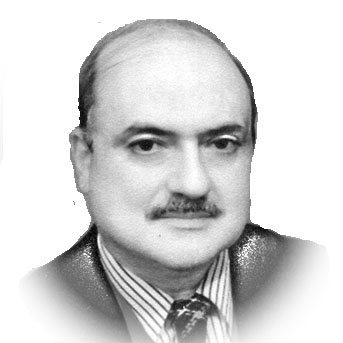Khalid Saleem
WITH life virtually at a stand-still due to the pandemic, the best one can hope to do is ramble, in more senses than one. As a subject, our – not so new – Capital City sticks out on this score, despite the fact that it hardly possesses outstanding landmarks that its residents can boast about with pride. When the, then, President took the momentous decision to opt for a brand new Capital, the news did generate a murmur of sorts; though – looked at through the contemporary lens – the whole scheme does not appear to have been well-thought out. For one thing, no thought appears to have been given to the Plan to restrict it from bursting out at the seams. Some Capitals are distinguished by their history others by geography; still others by their veritable grandeur. For an observer, it would require considerable stretch of imagination, to place our very own Capital City in any one of these categories. Nevertheless, the city does possess many peculiarities, some but not all of them laudable. An individual’s perception of the city would of necessity have to be a subjective rather than objective exercise. What follows is a rambling attempt at pinpointing some of these peculiarities from eye view of a contemporary resident.
Contrary to the common perception, Islamabad is no longer the bureaucratic haven that it once was. The bureaucrats, with their peculiar swagger and their green number plated vehicles, are there alright, but they no longer dominate the city as they once used to. The city has been over-run by a motley crowd of the nouveux riches. These comprise the ‘people’s representatives’ on the one hand and, on the other, those that have migrated from the more prosperous neighbourhoods of the more affluent cities of the land. There are, in addition, the ‘economic migrants’ in search of livelihood, who inhabit the makeshift ghettos. The new arrivals have taken the lime-light away from the once all-powerful bureaucrat who now considers it prudent to withdraw to the relative safety of the drawing rooms and the (no longer?) exclusive Islamabad Club. That, of course, was before the pandemic turned everything upside down!
Looking over the shoulder, a by-product of this make-over was the sudden burst of high-class eateries and fancy marriage-halls that sprouted like wild mushrooms after rains. On the negative side are the vast array of beggars that virtually infest the city. If you are fortunate enough to own a car and successfully negotiate the roads to reach a popular shopping centre, beggars of myriad shapes and sizes descend on you like a swarm of locusts. It requires super-human effort to escape unscathed. By far, the most striking ‘feature’ for a visitor to the city is the virtual absence of decent public transport. The founding fathers of the capital, it appears, gave little thought to the matter of movement of the common man from point A to point B at reasonable cost and/or comfort. The much-vaunted plan of a Circular Railway sank without a trace.
A public-sector bus service ran for a while before it folded up as public-sector enterprises often do. A private sector bus service presented a glimmer of hope for a short period but this enterprise was snuffed out. What the city now has on offer is a pitiable fleet of ‘minibuses’ and cabs in various stages of disrepair. These are driven by a class of maniac drivers who attempt to pack in commuters much like the proverbial sardines in a tin. Then, there are, in tandem, a bevy of vans and taxi cabs – most of them in a sorry state of disrepair – that wander aimlessly around the city, rudderless and meter-less.
The late and welcome addition of a respectable metro-bus service that runs through the belly of the city and helps to connect it with the neighboring Rawalpindi city serves to give the public transport a semblance of respectability. The unfortunate fact that this otherwise laudable convenience is interrupted at the least provocation takes a lot out of its utility. On the positive side, though, what the city can still rightfully boast of is its greenery. The person who was in charge of planting of trees at the city’s planning stage did a superb job. As a consequence, most roads and avenues exhibited a refreshing green look. The negative side is that the people in charge subsequently possessed little or no expertise in how to nurture, prune and maintain the thousands of trees and bushes that had been planted betimes. The result is that several areas present a look of unkempt mini-forests.
Cleanliness and hygiene is yet another aspect that could and should have been paid sufficient attention betimes. Several beautiful natural streams criss-cross Islamabad Capital Territory but most of them have been allowed to get clogged because residents feel free to toss in debris and waste including plastic bags with impunity; the city administration being too busy in its own shenanigans to pay attention. The common resident, meanwhile, is being harassed out of his or her wits due to VIPs’ habit of cadging whole stretches of roads in the course of their hallowed ‘movements’. While one can understand and appreciate the need to protect big-wigs, surely the authorities need to spare a wee thought also for the lowly person in the street, especially when a sizeable chunk of the city has already been denied to him or her through its designation as the ‘Red Zone’. Add to the aforesaid the totally nondescript architecture, that jumps from one extreme to the other without so much as a ‘by your leave’, and you have a rough sketch of a city that sees before it an uphill struggle before it can even boast of a distinct identity.
— The writer is a former Ambassador and former Assistant Secretary General of OIC.









